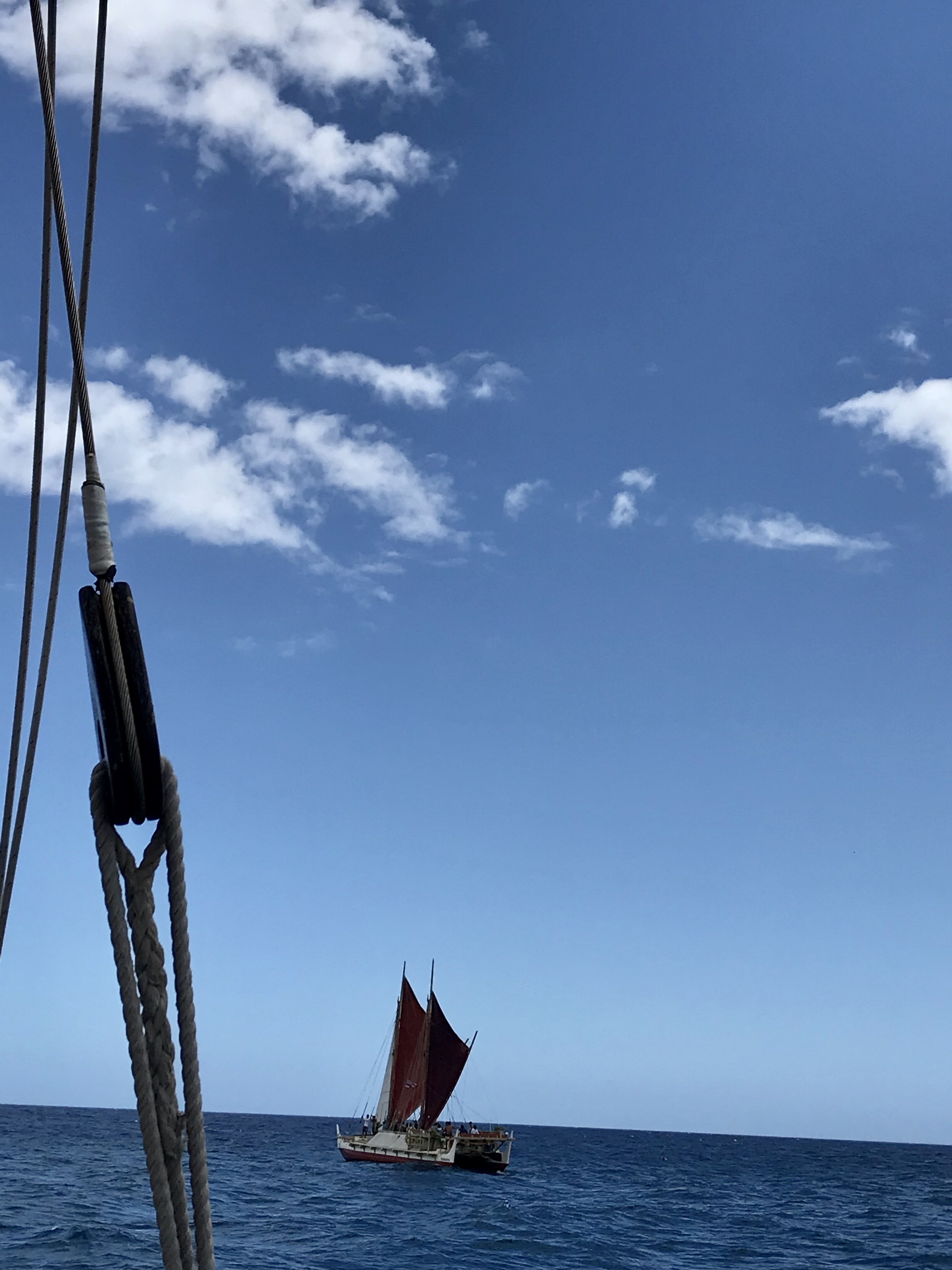The vaka Marumaru Atua sets sail on a northward voyage from Rarotonga to Hawaiʻi, maintaining a steady speed of 5 knots through the water. However, a 1-knot current flows in the direction of Lā Kona (a heading of 260 degrees). This current’s influence is like walking across a moving floor—no matter how steadily the vaka sails north, the entire ocean beneath it is shifting, altering its actual path. Similarly, Marumaru Atua navigates while the water, in the form of a current, also moves. In sailing, the direction and speed at which the current is pushing the vaka are referred to as set and drift, respectively.
The actual velocity of Marumaru Atua is the resultant of the vaka’s velocity and the current’s velocity. This resultant velocity vector denotes the vaka’s speed and direction relative to fixed objects on Earth, influenced by the current’s impact on Marumaru Atua. The magnitude and direction of this velocity vector are represented by the
speed over ground (SOG) and
course over ground (COG), respectively. SOG represents the speed of the vaka relative to fixed objects, accounting for both the vaka’s speed through the water and the current’s speed and direction. COG indicates the direction of the vaka’s motion over the Earth’s surface.
Understanding the difference between the velocity over water and the velocity relative to fixed objects illustrates the influence set and drift have on the vaka’s course and speed over ground. Voyagers need to account for set and drift when navigating to ensure they reach their intended destination accurately and safely.
(a)
Express Marumaru Atua’s velocity vector, represented as and the velocity vector of the current, denoted as in terms of their horizontal and vertical components. Round the answer to two decimal places.
Solution.
First, we draw the velocity vectors for Marumaru Atua and the current:
Since Marumaru Atua is sailing north at 5 knots, the velocity is:
To find the vector for the current, we need to know
the angle of the velocity vector in standard position (see
Definition 1.2.8). We begin by drawing the heading angle of
and its reference angle,
We can see from the figure that thus we get our reference angle as
We now draw our angle,
in standard position and the reference angle,

